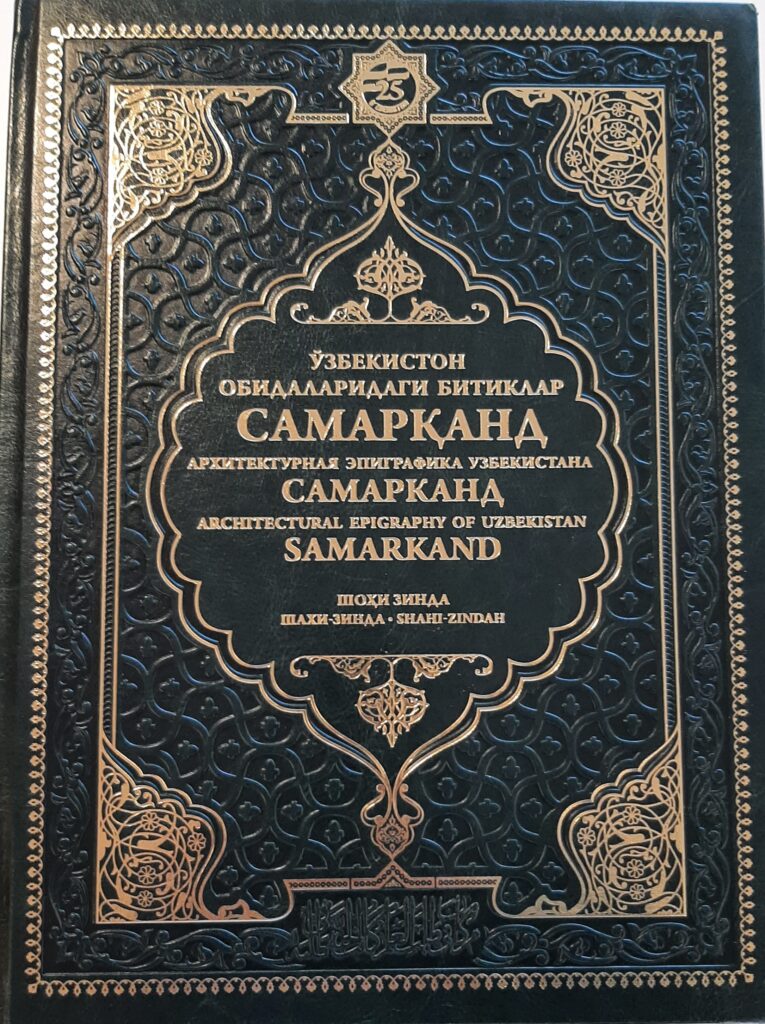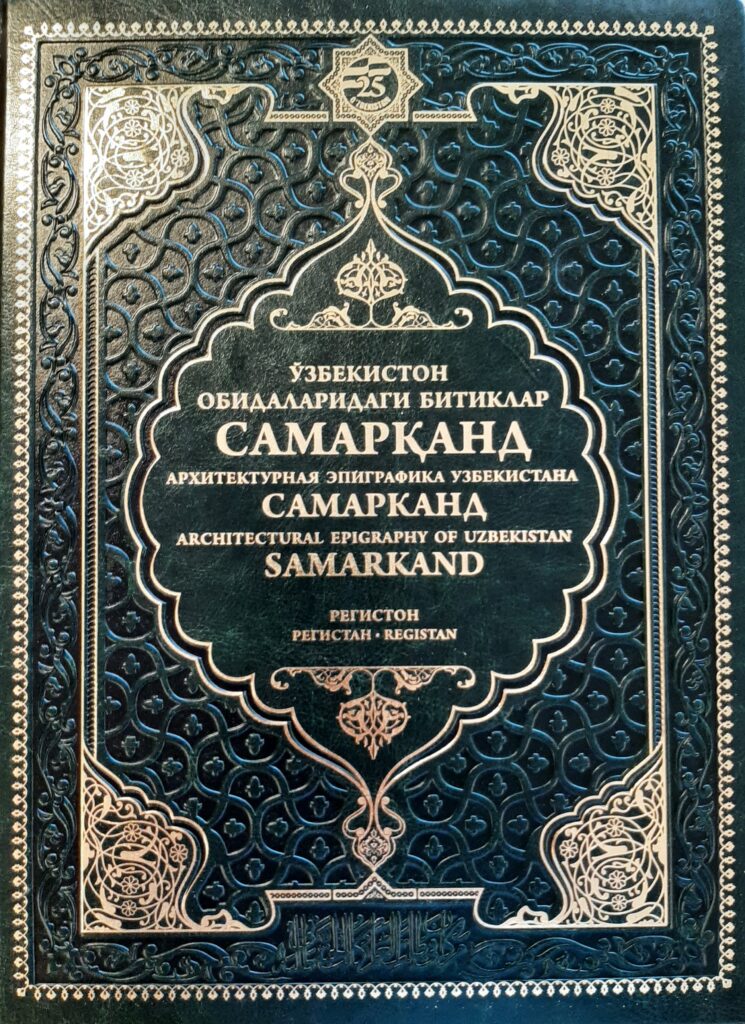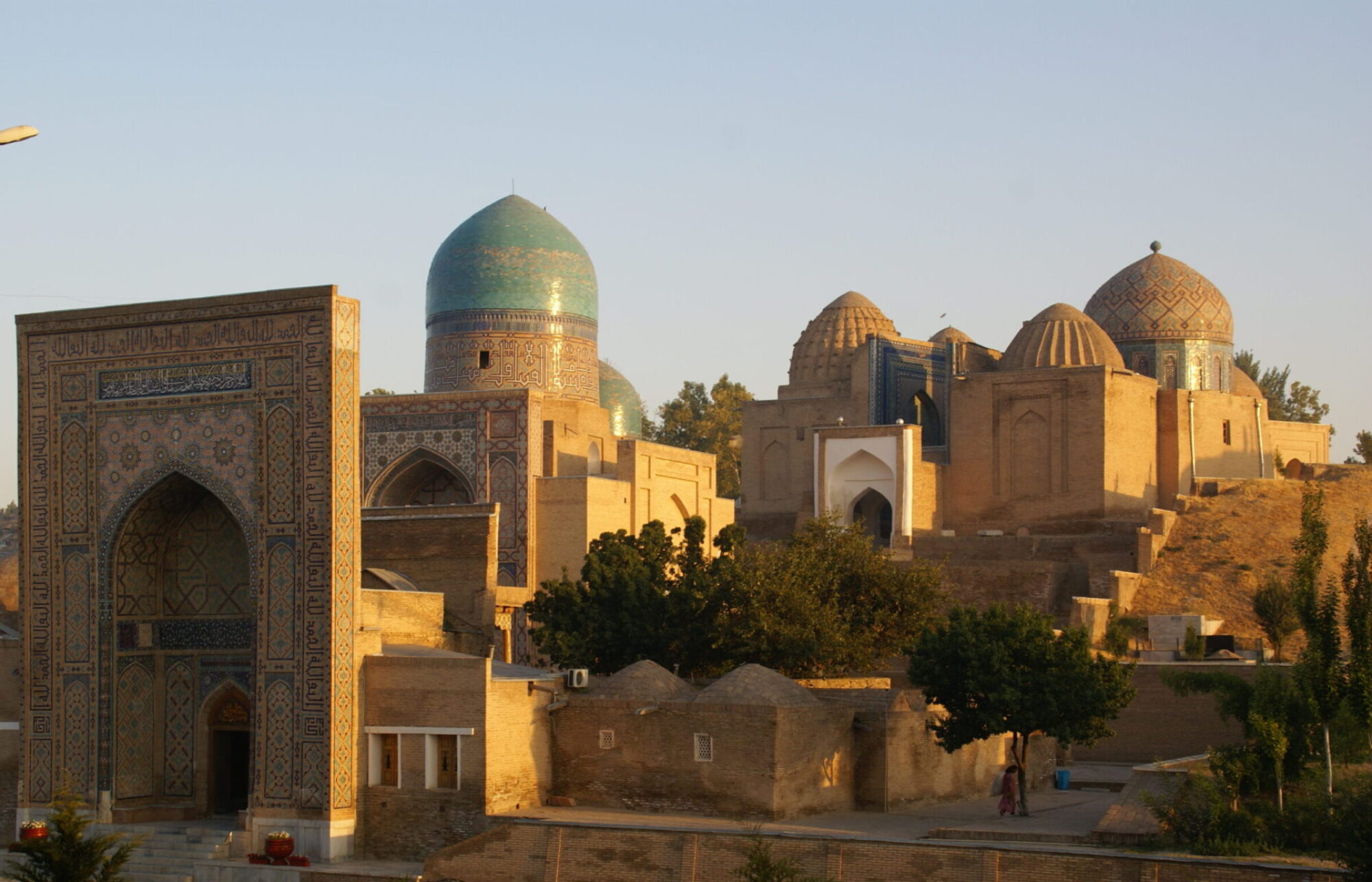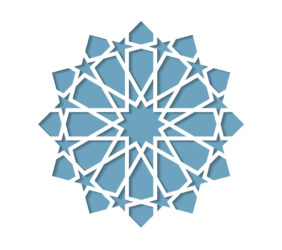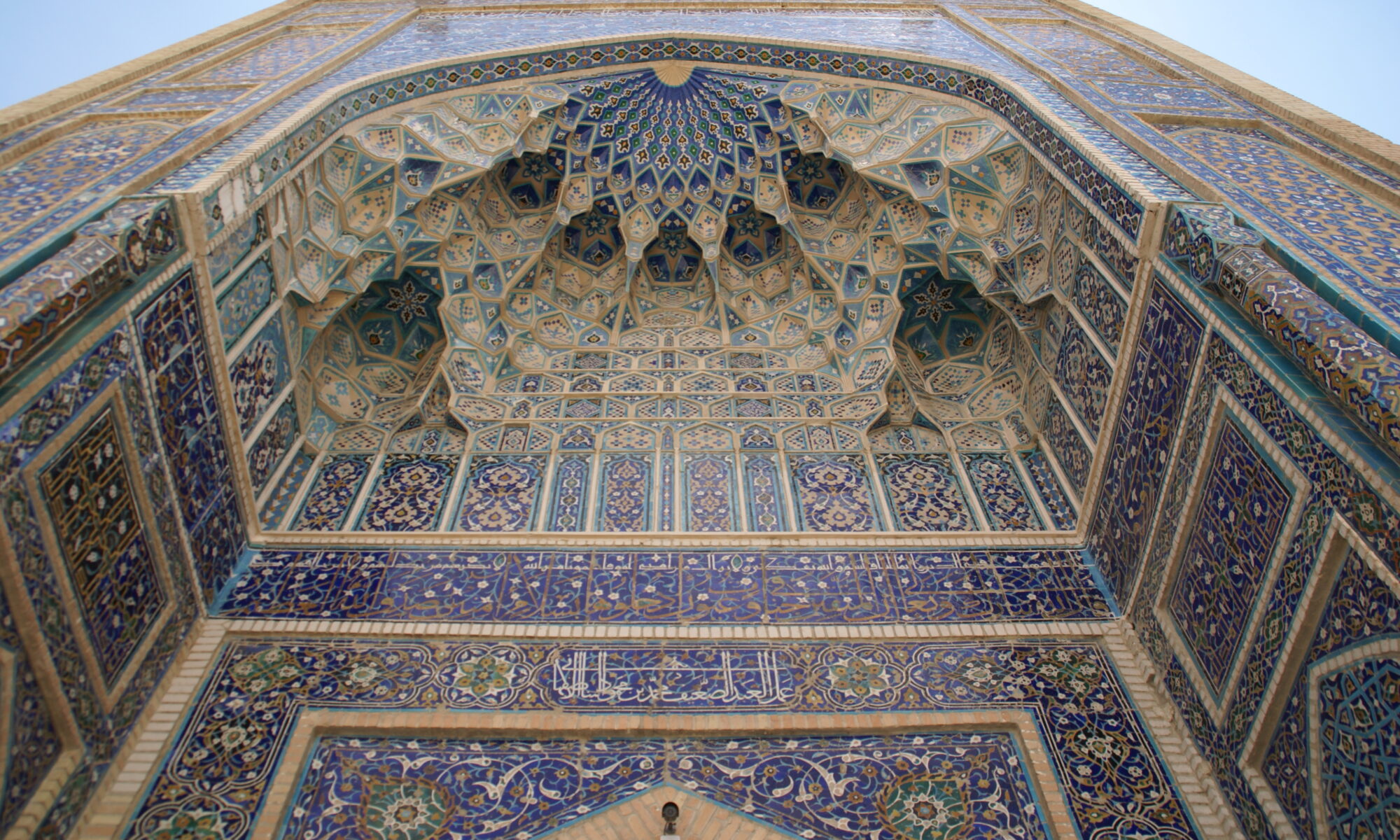Text taken from: Silk Road Cities. Documented through photographs, prints and postcards.
The city of Samarqand
Down through the centuries, Samarqand has inspired poetic superlatives for the richness of its location, its flourishing economic and cultural life, and its dazzling architecture. Samarqand is one of the oldest cities in the world situated in the Zarafshan Valley at the heart of the Silk Roads. During the time of the Achaemenid Empire (c. 550–330 BC) Samarqand was the capital of the Sogdian governors and merchants, who continued to control the trade routes from Imperial China to Byzantium until the 11th century.
In 329 BC Samarqand was conquered by Alexander the Great and adopted the Greek name of Marakanda. Subsequently, the city was ruled by a succession of Iranian and Turkic dynasties until the Mongols invasion by Chinggis Khan in 1220. Even though the city’s history is very ancient, much of what attracts us to Samarqand traces its origins in the era when Timur/Tamerlane (d. 1405) built his capital there around 1370.
Timur’s successors, notably starting with his grandson Ulugh Beg (r. 1409–1449), continued to adorn the city with major buildings. By the 19th century, when we begin to get foreign travel accounts, drawings and photographs to document the state of the monuments, most of the great buildings were in ruins as is most systematically documented by Friedrich Sarre. Plans to rebuild or restore some of them were developed as early as the first Soviet years, but the most significant projects were not implemented until the last thirty years of the 20th century beginning in the years prior to Uzbekistan’s declaration of independence in 1991.
For a more indepth description of the extensive resotrations you can read this short article A Traveller’s Impressions by Elena Paskaleva.
Sources for Samarqand
Archnet: Shah-i Zindah; Gur-i Amir ; Bibi Khanum; Registan; Registan restoration.
